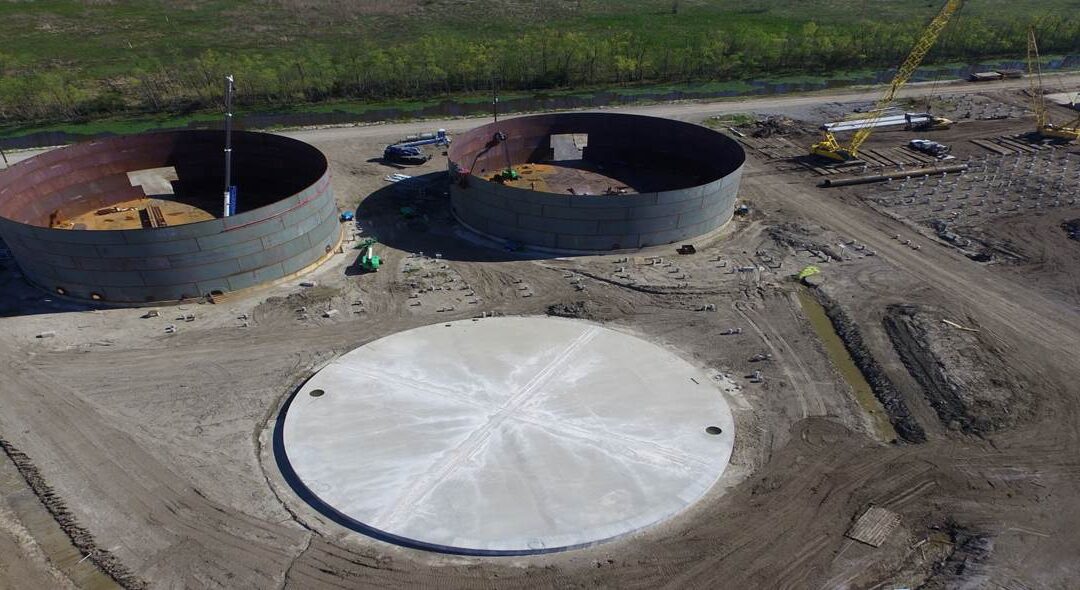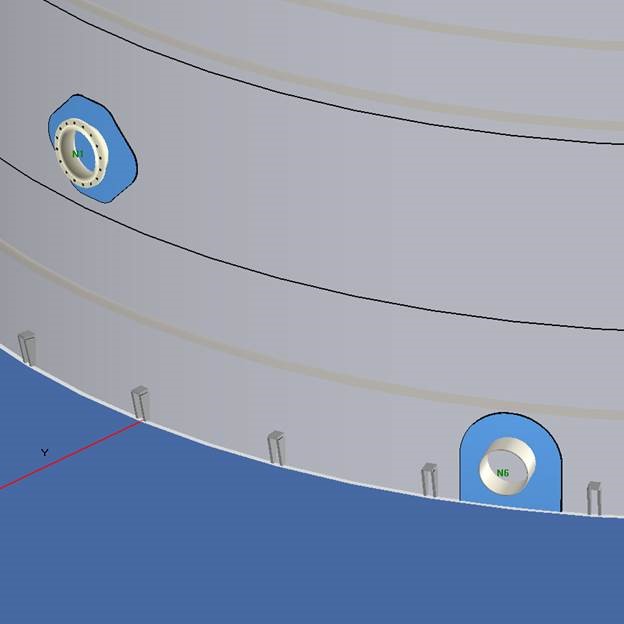Proven Tips for Conducting a Accurate API 650 Welding Inspection
Wiki Article
A Detailed Check Out the Installation Process of Welding Assessment Techniques
Welding assessment is a critical procedure that ensures structural integrity and security. The setup of evaluation methods involves numerous organized steps, each essential to attaining trustworthy results. From planning and device option to performing aesthetic and non-destructive tests, each stage demands careful focus. Understanding these procedures can greatly improve quality guarantee in welding tasks. What challenges emerge in carrying out these methods, and just how can they be effectively dealt with?Understanding the Significance of Welding Assessment
Welding examination is an essential component of making sure architectural integrity and safety in building and construction and production procedures. This method includes assessing welded joints for flaws, guaranteeing that they satisfy certain requirements and laws. By methodically determining weld top quality, inspectors can recognize problems such as splits, spaces, and incomplete blend, which can jeopardize the strength and durability of structures.The significance of welding evaluation expands past instant security issues; it assists prevent costly failings and possible threats in the long term. Efficient evaluation techniques foster conformity with sector standards, thereby enhancing the total dependability of welded parts. Additionally, a durable inspection process adds to keeping the reputation of building contractors and makers, as it ensures customers of the high quality of their tasks. Inevitably, understanding the relevance of welding assessment is crucial for advertising secure building and construction practices and ensuring the longevity of vital infrastructure and products.
Choosing the Right Equipment for Evaluation
When choosing the ideal tools for inspection, it is necessary to contemplate the certain demands of the welding process and the products entailed. Numerous evaluation methods, such as aesthetic, ultrasonic, and radiographic screening, necessitate distinctive tools tailored to their distinct demands. For visual inspections, tools like multiplying calipers and glasses are crucial for evaluating weld top quality. Ultrasonic testing calls for specific devices capable of transferring and receiving sound waves to discover inner imperfections. Radiographic testing, on the various other hand, utilizes X-ray or gamma-ray sources together with sensitive movie or electronic detectors to disclose incongruities.
Additionally, individual protective tools (PPE) is important to ensure the security of assessors during examinations. Picking the right devices not just enhances the precision of assessments yet additionally adds to the general integrity and safety of the welding project. A comprehensive understanding of readily available tools and their applications is vital for efficient welding assessment.
Getting ready for the Assessment Process
Before launching the inspection process, it is necessary to develop a detailed plan that outlines the extent and goals of the assessment. This plan must include details requirements that define what constitutes acceptable quality in the welding job being checked. Identifying the pertinent codes and criteria is essential, as they will certainly direct the evaluation standards and methodologies.In addition, personnel entailed in the assessment needs to be properly educated and certified in welding examination methods to ensure integrity and accuracy. A list can be advantageous in organizing the various facets of the evaluation, ranging from tools preparedness to environmental problems that could impact the analysis.

Logistical factors to consider such as scheduling, available resources, and communication between team members must be resolved. By preparing methodically, assessors can boost the efficiency of the examination and make sure that all essential variables are properly considered prior to waging the examination itself.
Performing Aesthetic Inspections

Carrying out visual assessments is an important action in the welding inspection procedure, needing cautious prep work to guarantee reliable assessment. Inspectors need to recognize with essential issue signs that can signal possible issues in weld top quality. By focusing on these aspects, one can improve the total dependability of the evaluation outcomes.
Preparing for Visual Examination
Visual examination works as a vital primary step in the welding examination process, assuring that any type of possible problems are recognized early (API 650 Welding Inspection). Proper preparation is crucial for efficient aesthetic evaluation. Assessors should begin by assessing relevant documentation, including welding treatments and requirements, to understand the task requirements. They have to gather essential devices, such as amplifying glasses, flashlights, and suitable personal safety equipment (PPE) A comprehensive exam of the examination location is crucial; inspectors ought to verify it is clean and complimentary of blockages. Additionally, it is necessary to establish optimal lights problems to improve visibility of welds. By taking these primary actions, assessors can develop a setting helpful to recognizing disparities and ensuring his response the integrity of the bonded structuresSecret Problem Indicators
A detailed understanding of key problem indications is crucial during visual inspections to guarantee the quality and safety and security of welded joints. Inspectors ought to concentrate on specific indications such as splits, porosity, damages, and insufficient blend. Cracks may appear as sharp lines and can jeopardize architectural integrity. Porosity materializes as small holes that can compromise weld strength. Undercuts, which are grooves along the weld side, can bring about stress concentration. Incomplete blend shows that the weld steel did not correctly bond with the base product, leading to a weak joint. By systematically determining these issues, inspectors can determine compliance with market requirements and boost the general dependability of bonded frameworks, ultimately adding to safer operational conditions.Executing Non-Destructive Testing Techniques

Countless non-destructive screening (NDT) methods are important to ensuring the stability of welded frameworks without endangering their capability. These methods allow inspectors to examine weld quality and spot problems without causing damage to the products being tested. Typical NDT techniques include ultrasonic testing, radiographic testing, magnetic fragment testing, and color penetrant screening. Each approach offers a specific purpose, addressing different kinds of problems such as fractures, porosity, or incomplete fusion.
Implementing NDT methods calls for an organized strategy, beginning with choosing the ideal approach based upon the materials and the nature of the weld. Educating employees in these strategies is vital for exact outcomes. Additionally, establishing clear procedures and criteria guarantees consistency throughout the evaluation procedure. By incorporating NDT right into the welding assessment workflow, companies can enhance the dependability of their items while reducing prospective dangers related to architectural failings. This aggressive approach ultimately contributes to maintaining safety and quality standards in welded buildings.
Examining and documenting Inspection Results
Reliable paperwork and evaluation of inspection results are important components of the welding inspection procedure. Accurate records of assessment searchings for offer as a reference for quality assurance and conformity with sector criteria. API 650 Welding Inspection. Assessors must use electronic platforms or structured kinds to log information such as the type of weld, evaluation methods used, and any type of discrepancies identified throughout the examinationThorough evaluation is vital as soon as data is collected. This entails comparing outcomes versus developed requirements to identify fads or persisting issues. Analytical tools may be utilized to quantify flaws and evaluate their influence on general weld quality.
In addition, efficient interaction of findings to appropriate stakeholders is crucial. Recaps and reports should be succinct and clear, highlighting key understandings and recommendations for restorative activities. By systematically evaluating and recording inspection results, companies can promote constant improvement in welding techniques and improve item honesty.
Regularly Asked Concerns
What Credentials Are Required to Become a Welding Assessor?
To end up being a welding inspector, one commonly requires relevant accreditations such as AWS CWI, in addition to experience in a fantastic read welding techniques, knowledge of welding codes, and efficiency in assessment strategies to assure quality and safety requirements.Just How Usually Should Welding Inspections Be Conducted?
Welding evaluations ought to be performed routinely, usually after each weld is finished, and regularly during projects. Aspects such as task intricacy, sector criteria, and governing needs can influence the regularity of these evaluations.What Is the Price of Welding Evaluation Services?
The cost of welding assessment services varies considerably based upon factors such as job complexity, location, and dimension. Commonly, prices range from $100 to $150 per hour, with anchor added costs for specialized testing and certifications.Exist Certifications for Welding Inspectors?
Yes, there are different accreditations for welding examiners, consisting of those used by the American Welding Culture (AWS) and the International Institute of Welding (IIW) These accreditations guarantee assessors possess the necessary abilities and understanding for effective analyses.
How Do I Select an Evaluation Company?
To choose an assessment solution copyright, one must assess credentials, experience, industry credibility, and consumer reviews. In addition, comparing solution offerings and rates can help ensure the chosen copyright meets particular task requires efficiently.Furthermore, employees involved in the assessment has to be properly trained and accredited in welding examination strategies to guarantee dependability and accuracy. Carrying out aesthetic examinations is a crucial step in the welding evaluation procedure, requiring careful prep work to guarantee effective assessment. Visual evaluation serves as a vital initial action in the welding inspection procedure, assuring that any kind of possible flaws are identified early. Reliable documents and analysis of assessment results are important components of the welding assessment process. Welding examinations should be conducted routinely, commonly after each weld is completed, and regularly during projects.
Report this wiki page